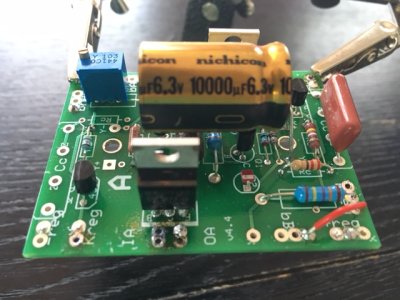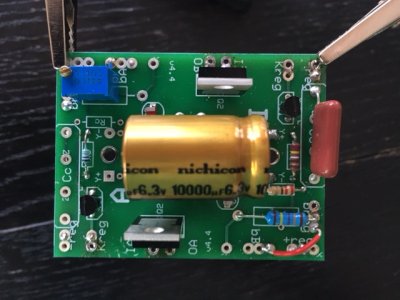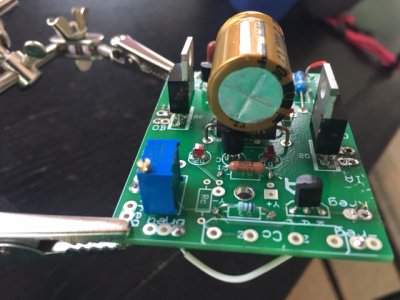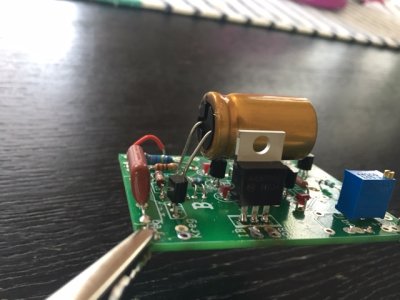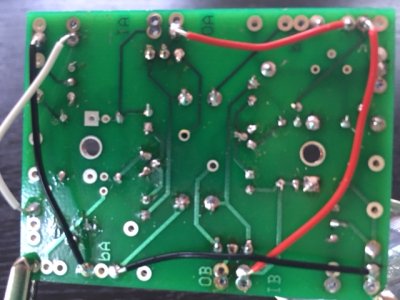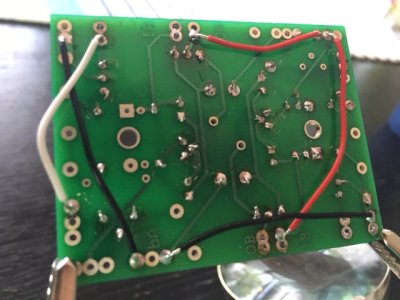I'm close to finishing my Kaiju build but I'm having a problem at the driver testing stage.
IA and OA on the D socket board were spot on spec. However the voltage at 46U measures 130VDC and the trim potentiometer does not work at changing the voltage at all. For what it's worth the A side worked no problem.
I'm wondering if the fact that turning the screw on the trim potentiometer doesn't change voltage does that indicate that the potentiometer is faulty?
Thanks,
Jamus
IA and OA on the D socket board were spot on spec. However the voltage at 46U measures 130VDC and the trim potentiometer does not work at changing the voltage at all. For what it's worth the A side worked no problem.
I'm wondering if the fact that turning the screw on the trim potentiometer doesn't change voltage does that indicate that the potentiometer is faulty?
Thanks,
Jamus

